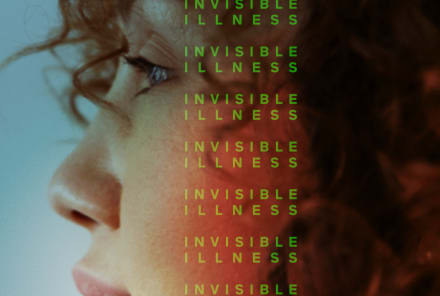Advertisement
6 Truths About Dissociative Identity Disorder, From AnnaLynne McCord's Public Diagnosis


When 90210 actress and activist AnnaLynne McCord said she wanted to film her session with me discussing her dissociative identity disorder (DID) diagnosis, I was thrilled. DID, formerly known as multiple personality disorder, is one of the most complex and misunderstood psychiatric conditions. People with the disorder experience tremendous amounts of shame and often suffer in silence for years before getting a diagnosis.
When AnnaLynne's two videos (you can see part 1 here and part 2 here) started getting a lot of buzz, it increased awareness of this disorder and helped debunk some of the many misconceptions surrounding DID. Here are six takeaways from AnnaLynne's experience that I want to highlight:
Dissociative identity disorder is not fake.
For decades, DID has been considered a controversial diagnosis, but an empirical review in the Australian & New Zealand Journal of Psychiatry1 validates it is a real condition. Like AnnaLynne reveals in her videos, people with DID develop one or more alternate identities, known as "alters" or "splits." For example, as AnnaLynne describes her own splits: "You'll see me just show up with a black wig and a new personality. I was this tough little baddy, and then I'd be the bohemian flower child."
DID isn't uncommon.
Research shows that DID affects approximately 1% of Americans1, or about 3 million people. Although signs of the disorder often emerge during childhood, most people don't get diagnosed until about age 30.
DID is often related to childhood trauma.
AnnaLynne has previously opened up about experiencing childhood sexual abuse, which is common among people with DID. In fact, a Canadian study on 102 cases of multiple personality disorder2 found that 95% of the individuals had been subjected to sexual and/or physical abuse as children. Creating alters is a coping mechanism to escape the horrors of abuse.
DID affects memory.
In her videos, AnnaLynne reveals that she has gaps in her memory, which is one of the most common symptoms among people with this condition. DID sufferers often lose track of everyday events, have blanks in terms of autobiographical information, and shut out traumatic experiences.
DID is associated with changes in the brain.
A growing body of neuroimaging research3, as well as our own brain imaging work at Amen Clinics, shows that DID is associated with structural and functional changes in the brain. Brain regions where abnormal blood flow or activity has been noted include:
- Hippocampus (involved in memory and learning)
- Prefrontal cortex (involved in attention and focus)
- Amygdala (involved in emotional response)
Healing is possible.
You are not stuck with DID, but the journey to wellness can take time. Learning to deal with past abuse and trauma is key. A noninvasive yet powerful therapy called eye movement desensitization and reprocessing (EMDR) can be helpful in removing the emotional charges associated with traumatic memories. Balancing the brain with a brain-healthy lifestyle is another important part of the healing process for DID.
Watch Next
Enjoy some of our favorite clips from classes
Enjoy some of our favorite clips from classes
What Is Meditation?
Mindfulness/Spirituality | Light Watkins
Box Breathing
Mindfulness/Spirituality | Gwen Dittmar
What Breathwork Can Address
Mindfulness/Spirituality | Gwen Dittmar
The 8 Limbs of Yoga - What is Asana?
Yoga | Caley Alyssa
Two Standing Postures to Open Up Tight Hips
Yoga | Caley Alyssa
How Plants Can Optimize Athletic Performance
Nutrition | Rich Roll
What to Eat Before a Workout
Nutrition | Rich Roll
How Ayurveda Helps Us Navigate Modern Life
Nutrition | Sahara Rose
Messages About Love & Relationships
Love & Relationships | Esther Perel
Love Languages
Love & Relationships | Esther Perel
What Is Meditation?
Box Breathing
What Breathwork Can Address
The 8 Limbs of Yoga - What is Asana?
Two Standing Postures to Open Up Tight Hips
How Plants Can Optimize Athletic Performance
What to Eat Before a Workout
How Ayurveda Helps Us Navigate Modern Life
Messages About Love & Relationships
Love Languages
Advertisement

Bounce Back Quickly After Workouts With This DIY Electrolyte Drink
Molly Knudsen, M.S., RDN

This Gave Me Osteoporosis At 32 & Here's What I Wish People Knew
AmiCietta Duche Clarke

New Study Shows This Vitamin May Lower Your Risk Of Alzheimer’s By 17%
Molly Knudsen, M.S., RDN

Bounce Back Quickly After Workouts With This DIY Electrolyte Drink
Molly Knudsen, M.S., RDN

This Gave Me Osteoporosis At 32 & Here's What I Wish People Knew
AmiCietta Duche Clarke

New Study Shows This Vitamin May Lower Your Risk Of Alzheimer’s By 17%
Molly Knudsen, M.S., RDN











